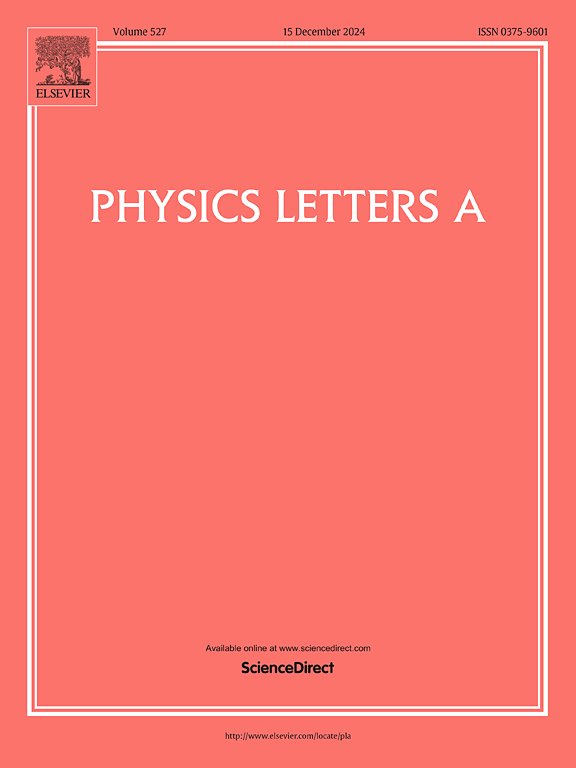有限尺寸Blume-capel模型中的伪过渡
IF 2.3
3区 物理与天体物理
Q2 PHYSICS, MULTIDISCIPLINARY
引用次数: 0
摘要
本文研究了二维有限尺寸格上Blume-Capel模型的伪跃迁。通过Wang-Landau采样方法和微正则拐点分析,我们确定了相变和高阶相变的位置。通过Metropolis抽样和正则系综分析,我们确定了系统在这些过渡点的几何特征。当晶体场参数D超过1.965,越过三临界点时,没有观察到三阶相关相变。然而,在高温区域发现了一个四阶独立相变,并通过Metropolis采样分析,确认了从有序顺磁相到无序顺磁相的相变,从而增强了相图。此外,从微正则分析和正则分析中得到的三阶相变位置是一致的和相互佐证的。我们推测,在强一阶相变的存在下,三阶相关相变会消失。本文章由计算机程序翻译,如有差异,请以英文原文为准。
Pseudo transitions in the finite-size Blume-capel model
This article investigates the pseudo transitions of the Blume-Capel model on two-dimensional finite-size lattices. By employing the Wang-Landau sampling method and microcanonical inflection point analysis, we identified the positions of phase transitions as well as higher-order phase transitions. Through Metropolis sampling and canonical ensemble analysis, we determined the geometric characteristics of the system at these transition points. When the crystal field parameter D exceeds 1.965, crossing the tricritical point, no third-order dependent phase transition is observed. However, a fourth-order independent transition was identified in the high-temperature region, and through Metropolis sampling analysis, a phase transition from the ordered paramagnetic phase to the disordered paramagnetic phase was confirmed, enhancing the phase diagram. Furthermore, the positions of the third-order phase transition obtained from both microcanonical and canonical analyses are consistent and mutually corroborative. We speculate that third-order dependent transitions vanish in the presence of strong first-order phase transitions.
求助全文
通过发布文献求助,成功后即可免费获取论文全文。
去求助
来源期刊

Physics Letters A
物理-物理:综合
CiteScore
5.10
自引率
3.80%
发文量
493
审稿时长
30 days
期刊介绍:
Physics Letters A offers an exciting publication outlet for novel and frontier physics. It encourages the submission of new research on: condensed matter physics, theoretical physics, nonlinear science, statistical physics, mathematical and computational physics, general and cross-disciplinary physics (including foundations), atomic, molecular and cluster physics, plasma and fluid physics, optical physics, biological physics and nanoscience. No articles on High Energy and Nuclear Physics are published in Physics Letters A. The journal''s high standard and wide dissemination ensures a broad readership amongst the physics community. Rapid publication times and flexible length restrictions give Physics Letters A the edge over other journals in the field.
 求助内容:
求助内容: 应助结果提醒方式:
应助结果提醒方式:


